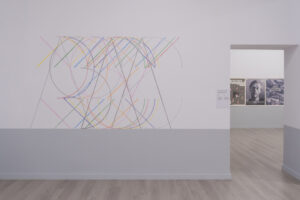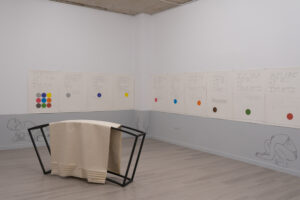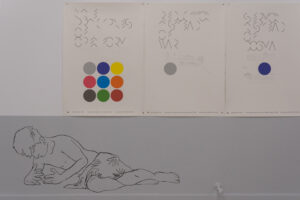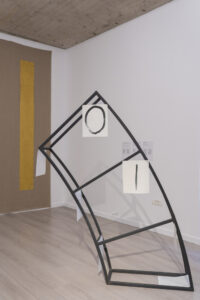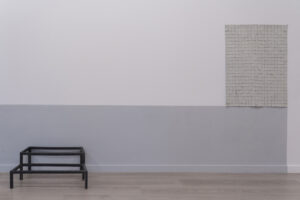07.07.-03.09.2022
Art Encounters Foundation presents If a story is present, the first exhibition in Romania dedicated to internationally renowned Macedonian artists Yane Calovski and Hristina Ivanoska, who live and work in Skopje and Berlin. If a story is present is curated by Diana Marincu. It includes a selection of recent works, both individual and collaborative, as well as a newly produced collaborative installation with a group of young and emerging artists based in Timișoara participating in the mentorship organized between May and July this year: Loredana Ilie, Andreea Ioniță, Ana Kun, Bogdan Matei, Teo Papadopol, Gavril Pop, Ioana Terheș, and Mihai Toth.
If a story is present is built around a nucleus of works developed over the last five years concerning the Open Form theory, one of the most experimental approaches to art and architecture conceived by Polish architect Oskar Hansen. Flexibility, collective participation, the activation of a “perceptive background,” and individual expression are a few of the elements of the conceptual and pedagogical guidelines that he put forward. Calovski and Ivanoska take further the theoretical principles and, through visual and text-based exercises, focus on society’s invisible structure and propose an extension of the institutional and artistic framework towards a view of the city and individuals as various elements. This view can create an elastic, non-hierarchical territory offering several conceptual directions for the exhibition by exploring concepts of decentralization of ideas through formal and chromatic typographical language.
Hansen’s unrealized museum proposal for Skopje with multiple patterns of folding and expansion is another solid conceptual frame of reference. On the one hand, the exhibition presents works that approach manual labor and the forms of comprehending, interpreting, and representing processes of narration. However, the narrative strategies are activated with the politics of memory and oblivion, fragmented histories, and fictional, imaginary spaces.
The exhibition’s title takes up an expression Hristina Ivanoska in the text that dramatizes the transcripts referring to the construction of the monumental complex Makedonium (or Ilinden) in the town of Krushevo, Macedonia. This text is based on memory and oblivion, inserting the narrator’s voice in the guise of a fictional literary presence capable of formulating a context but also a discourse. The title’s reference imposes a reading of the exhibition reflecting the “narrative turn” that Roland Barthes anticipated in 1966 through the essay dedicated to the structural analysis of the narrative, upon which, subsequently, the theories of narratology, elaborated by Tzvetan Todorov and other theoreticians, were built.
Storytelling became, over time, an instrument that compounds the technology of communication, the exercise of control and power, representing a device that conveys and passes over present-day discourses. Similarly, the exhibition space creates the premises of a narrative that fills in the gaps of memory or insufficient documentary information, encouraging narrative strategies to become possibilities for making and disseminating knowledge through visitors and artists.
The exhibition’s component dedicated to the young artists’ interventions complements the themes of Yane Calovski and Hristina Ivanoska. It proposes the creation of a collective nucleus built through the plurality of voices around different perspectives on memory and imagination in the current socio-political context.


